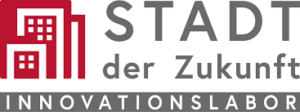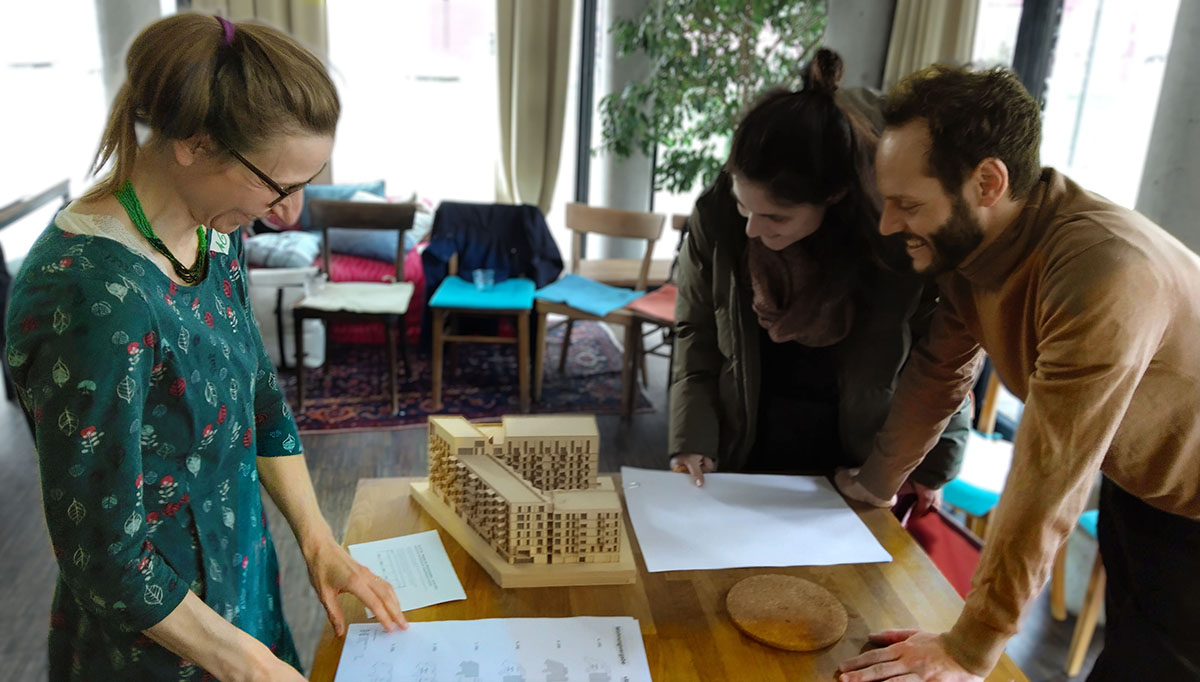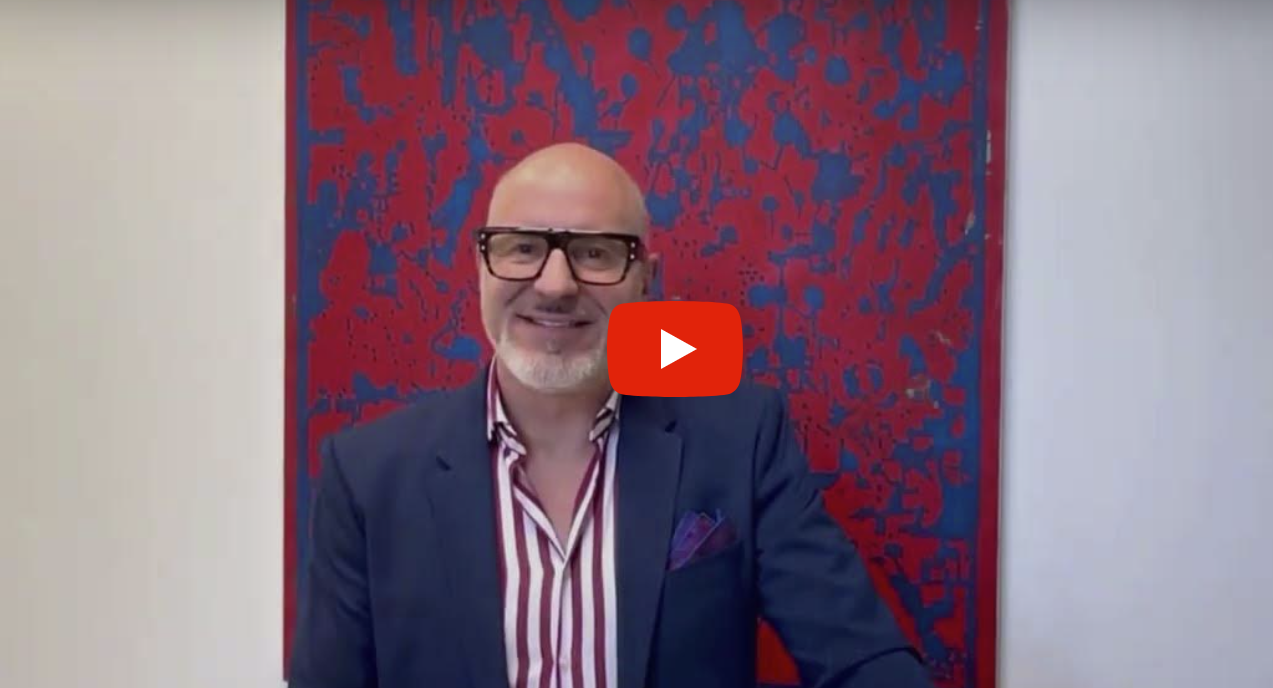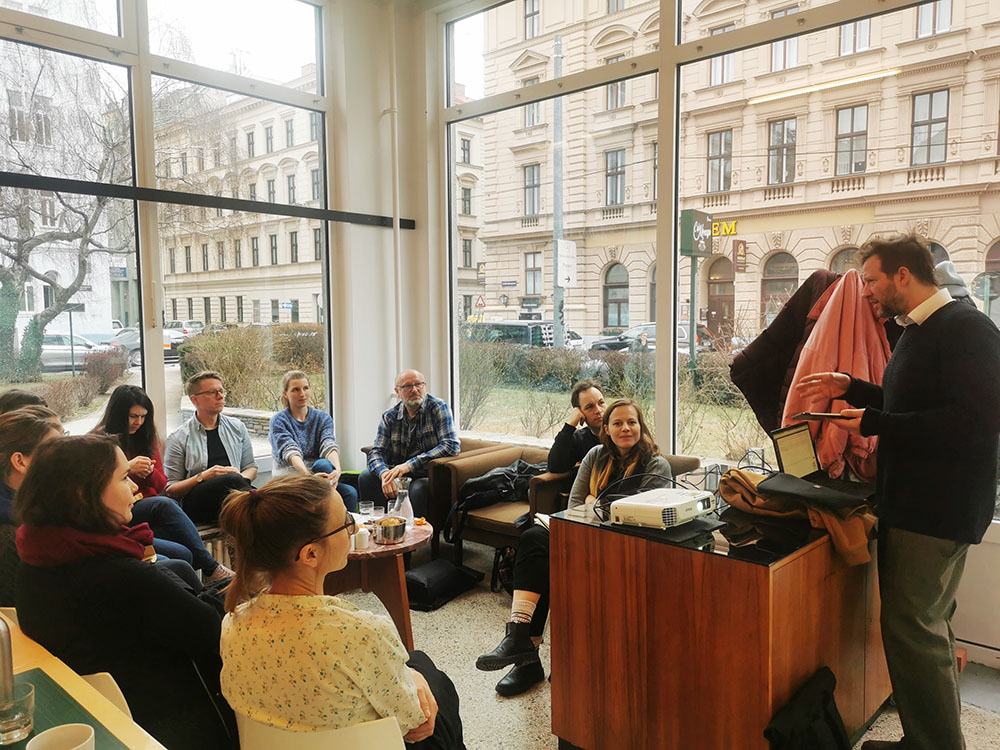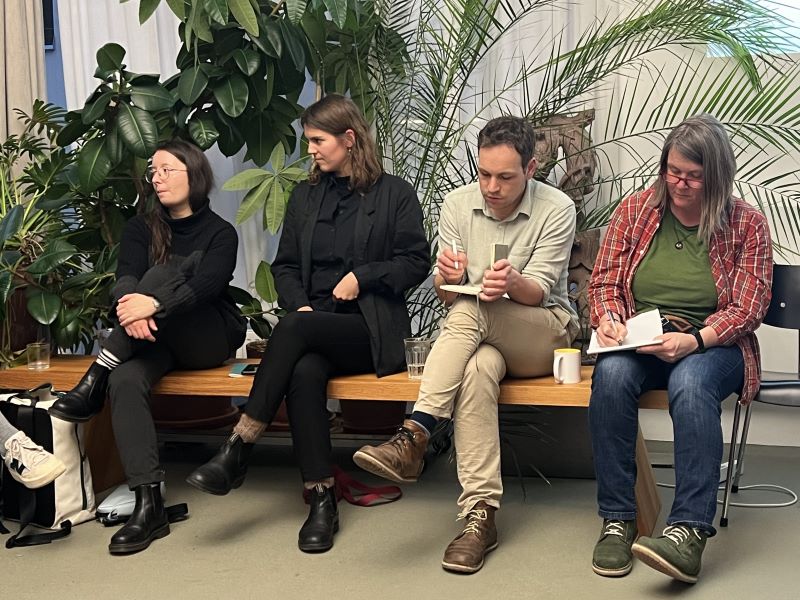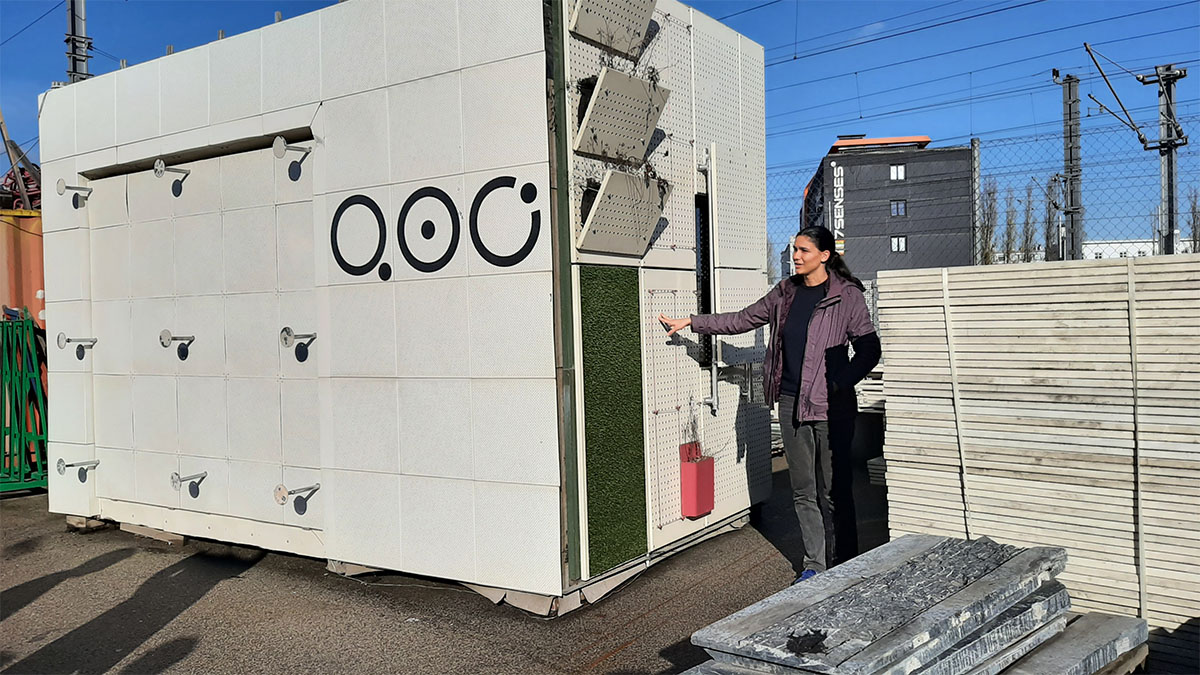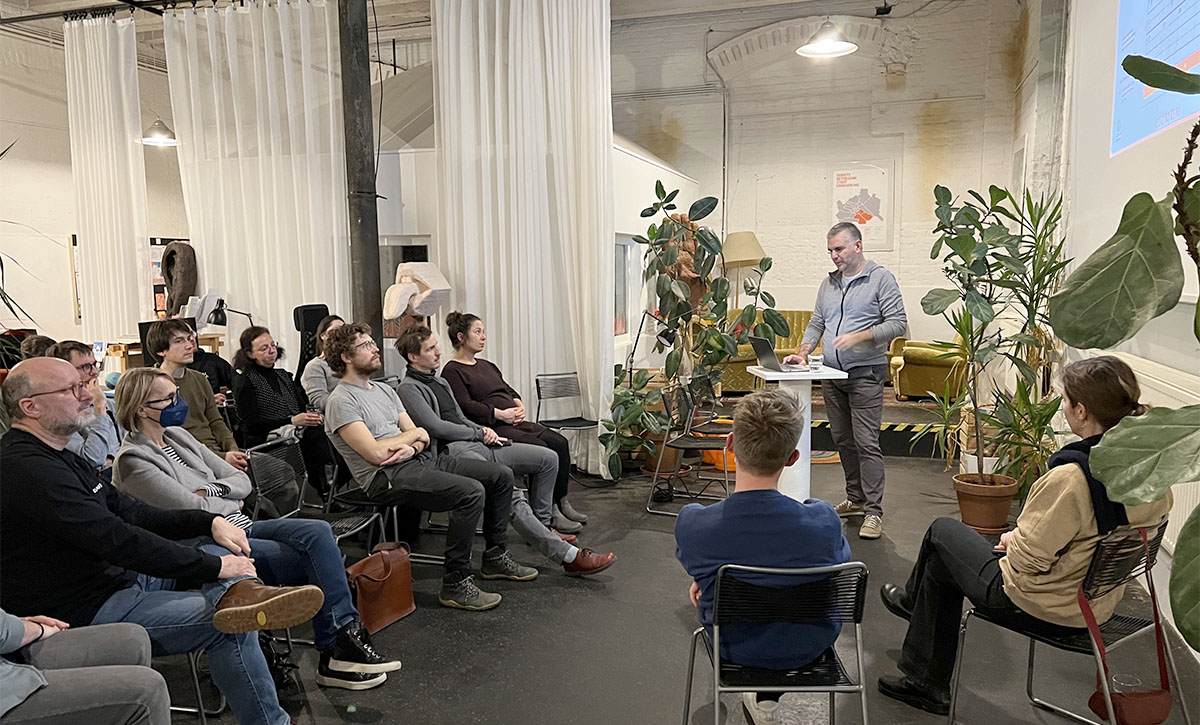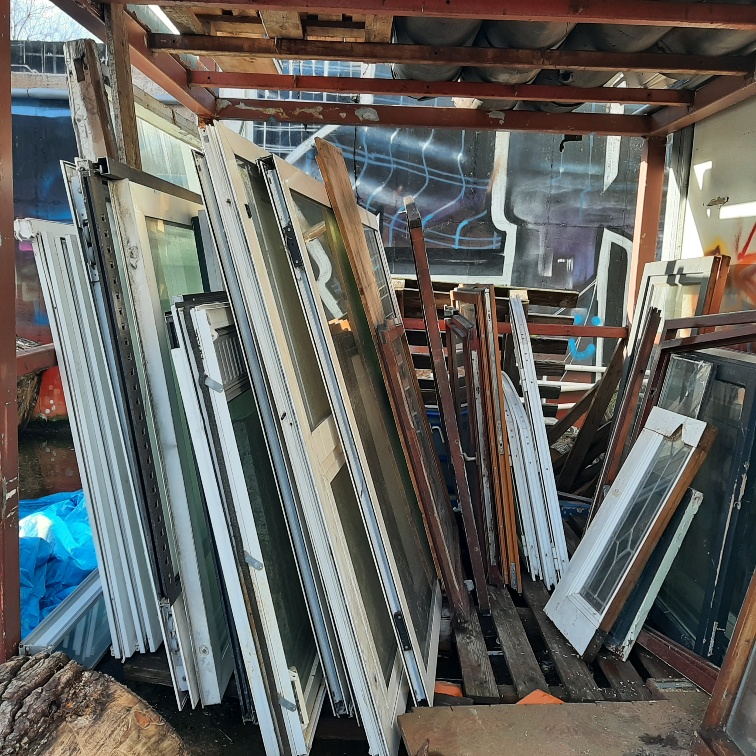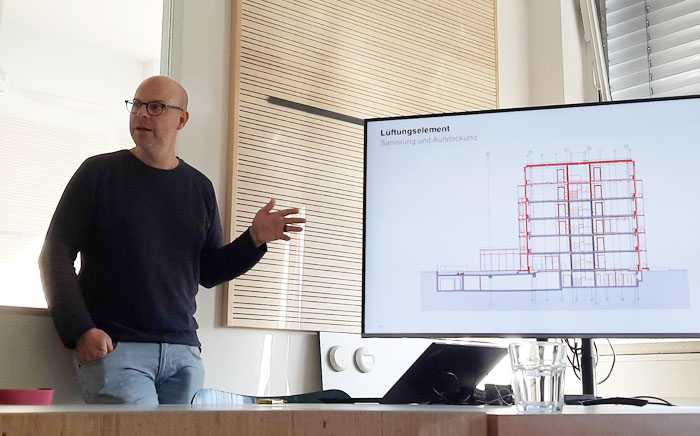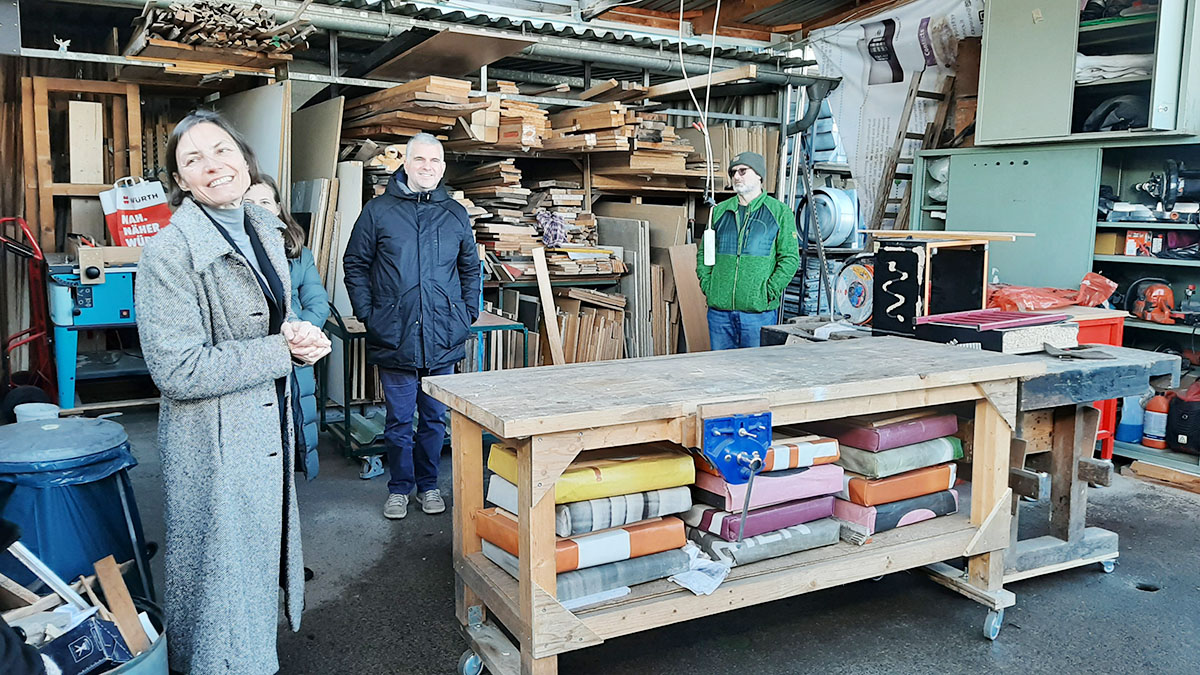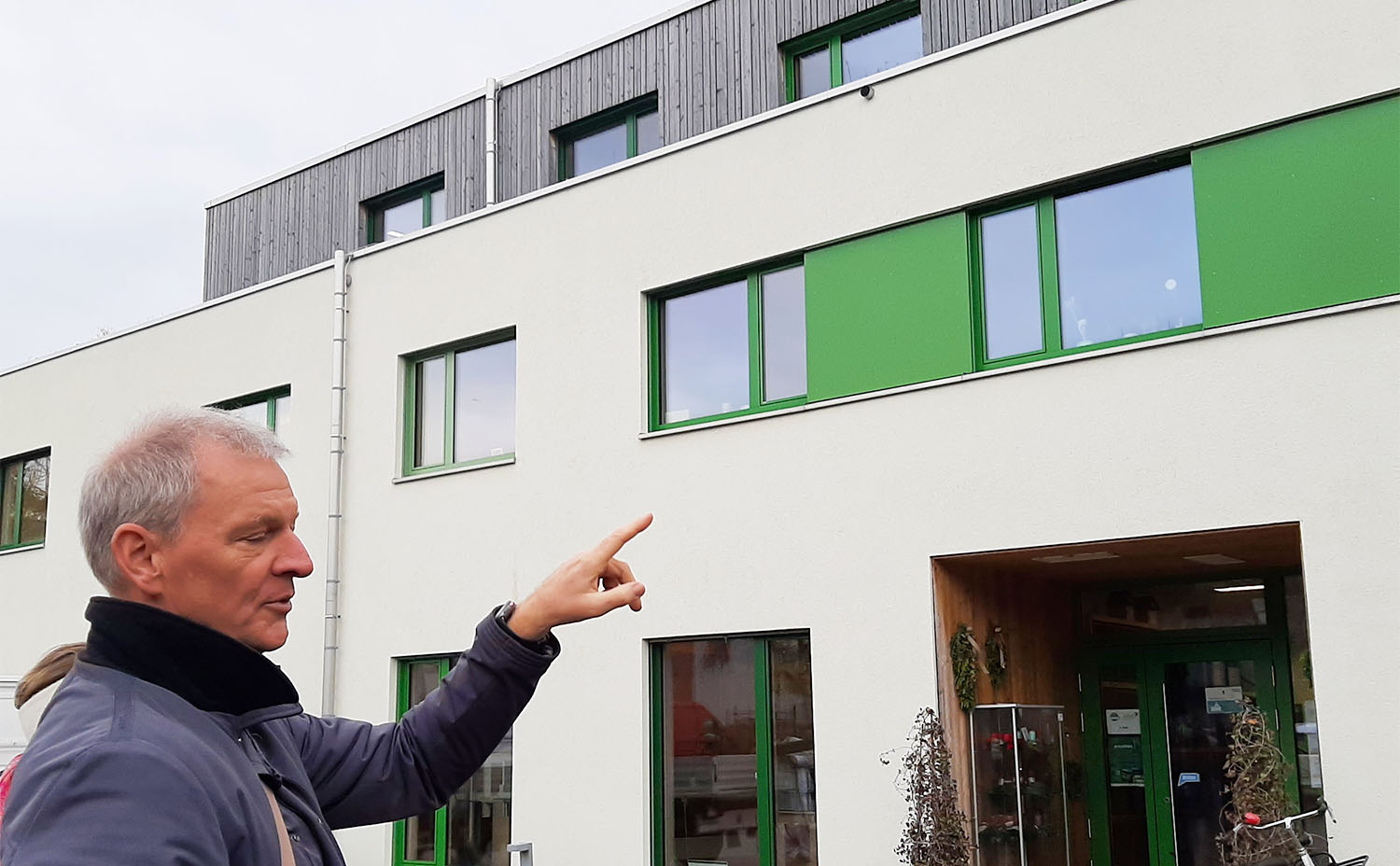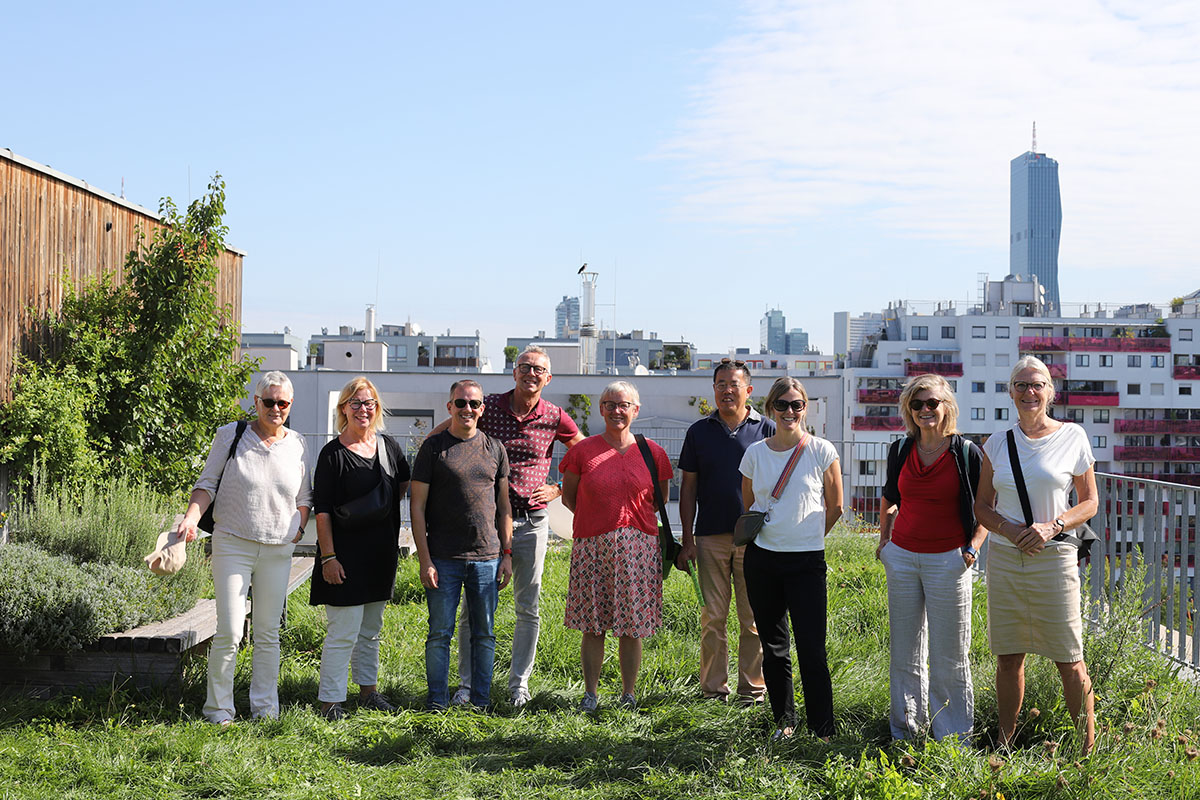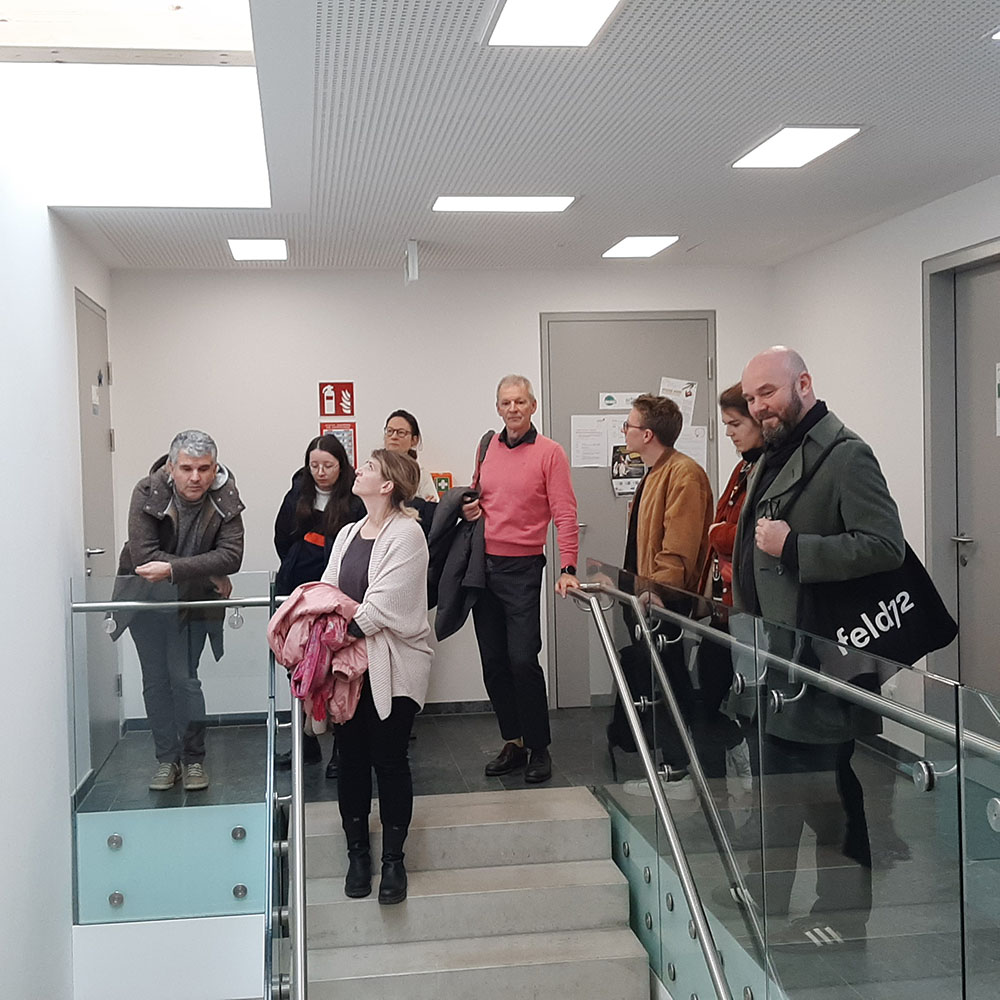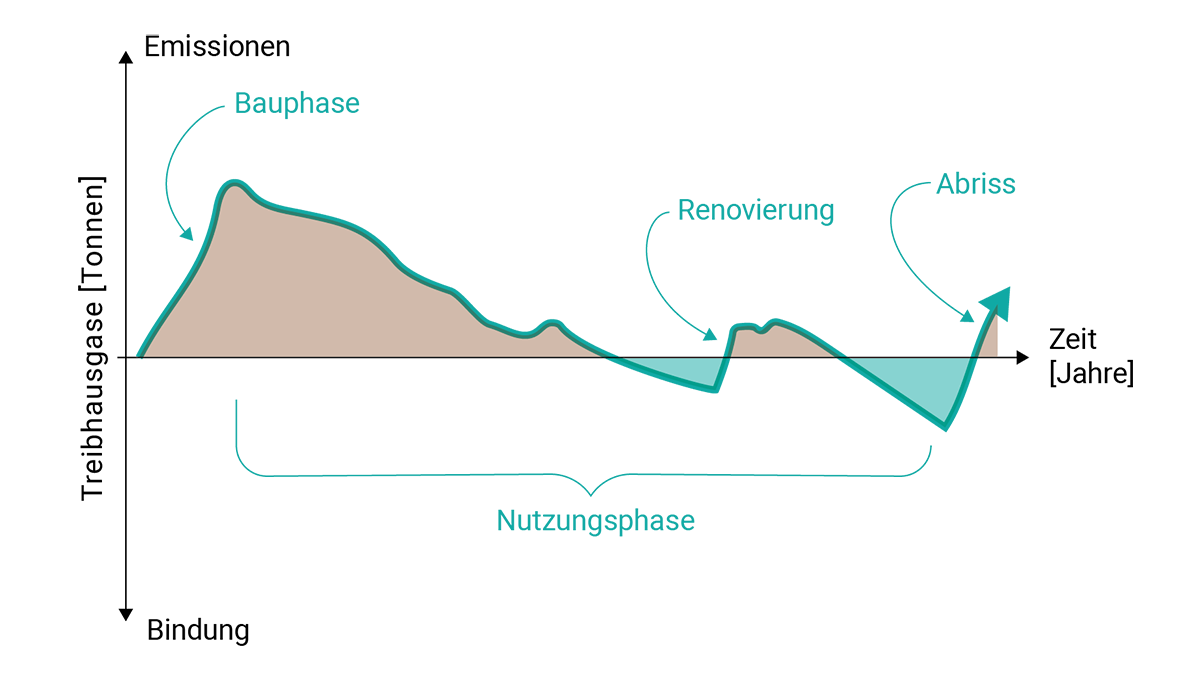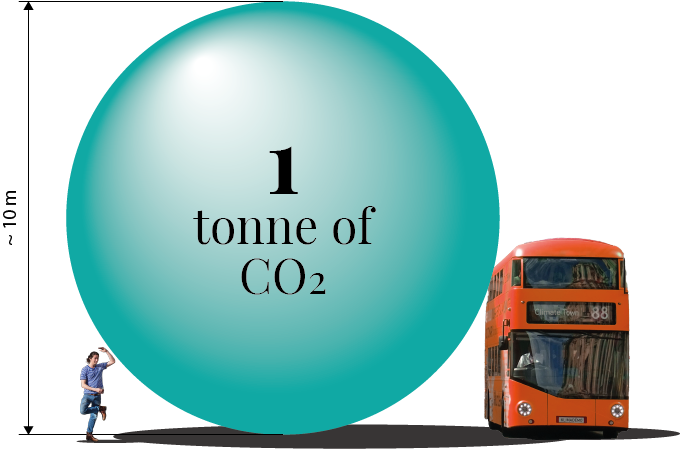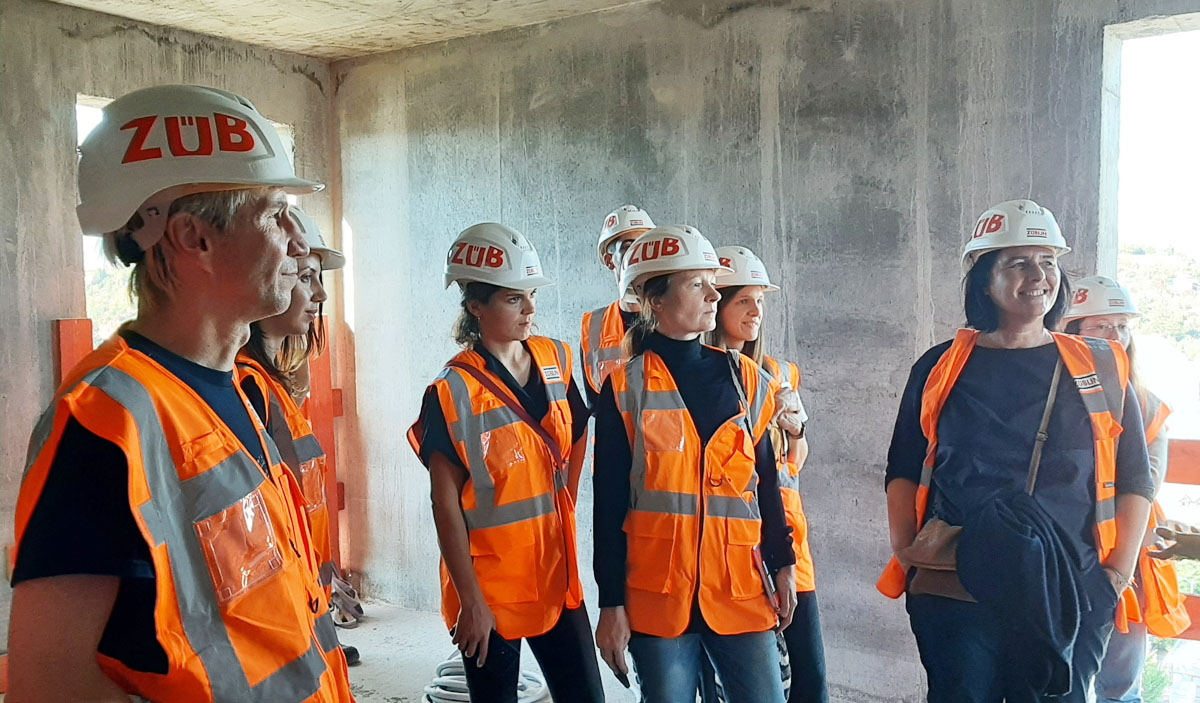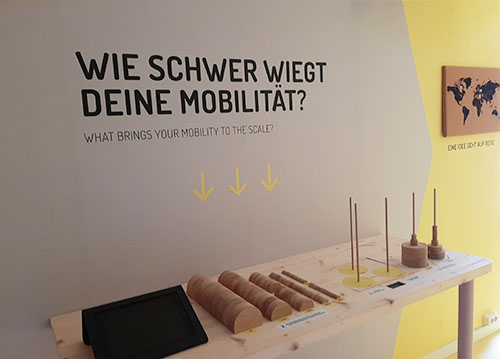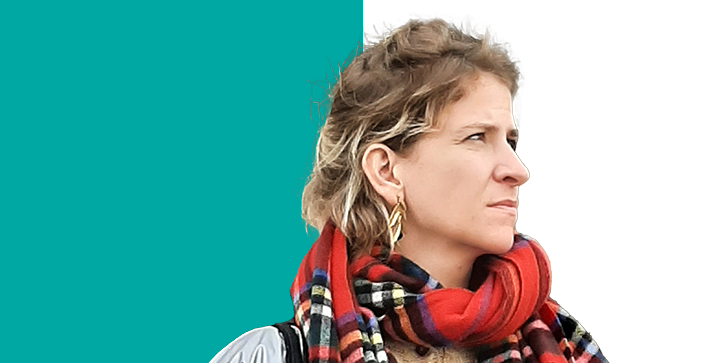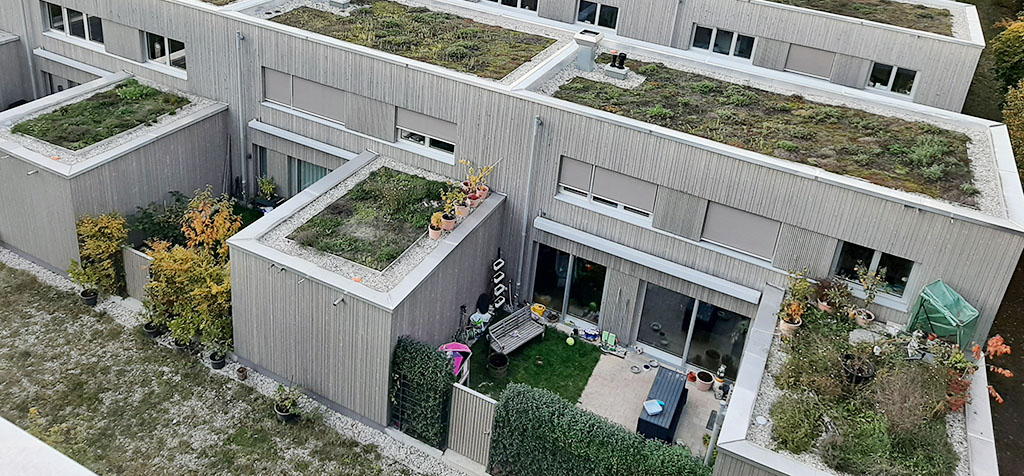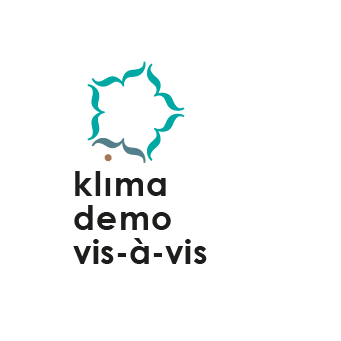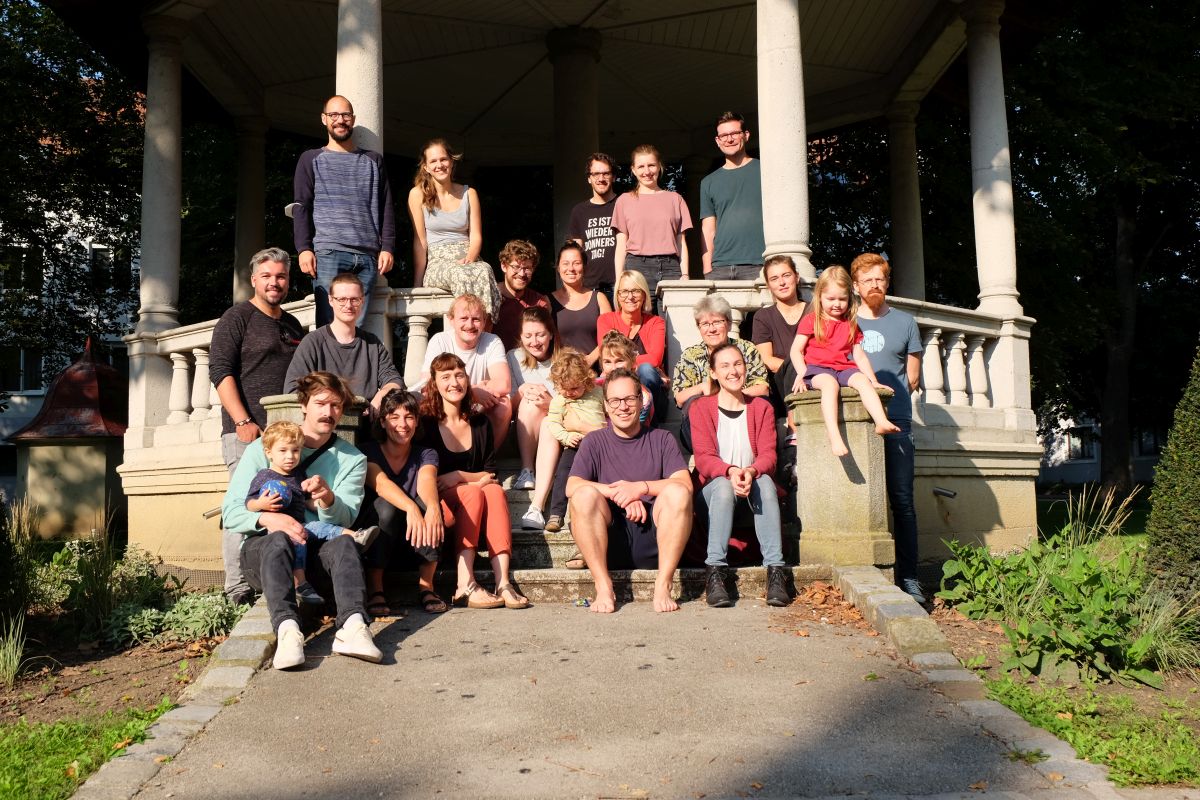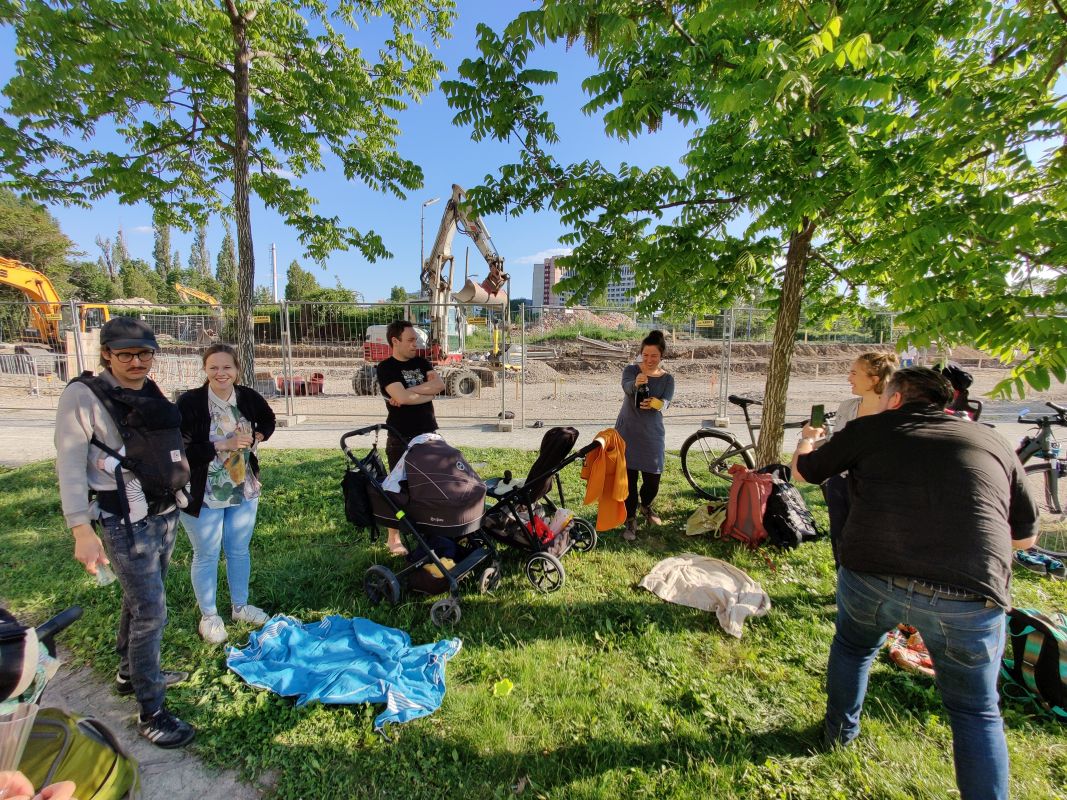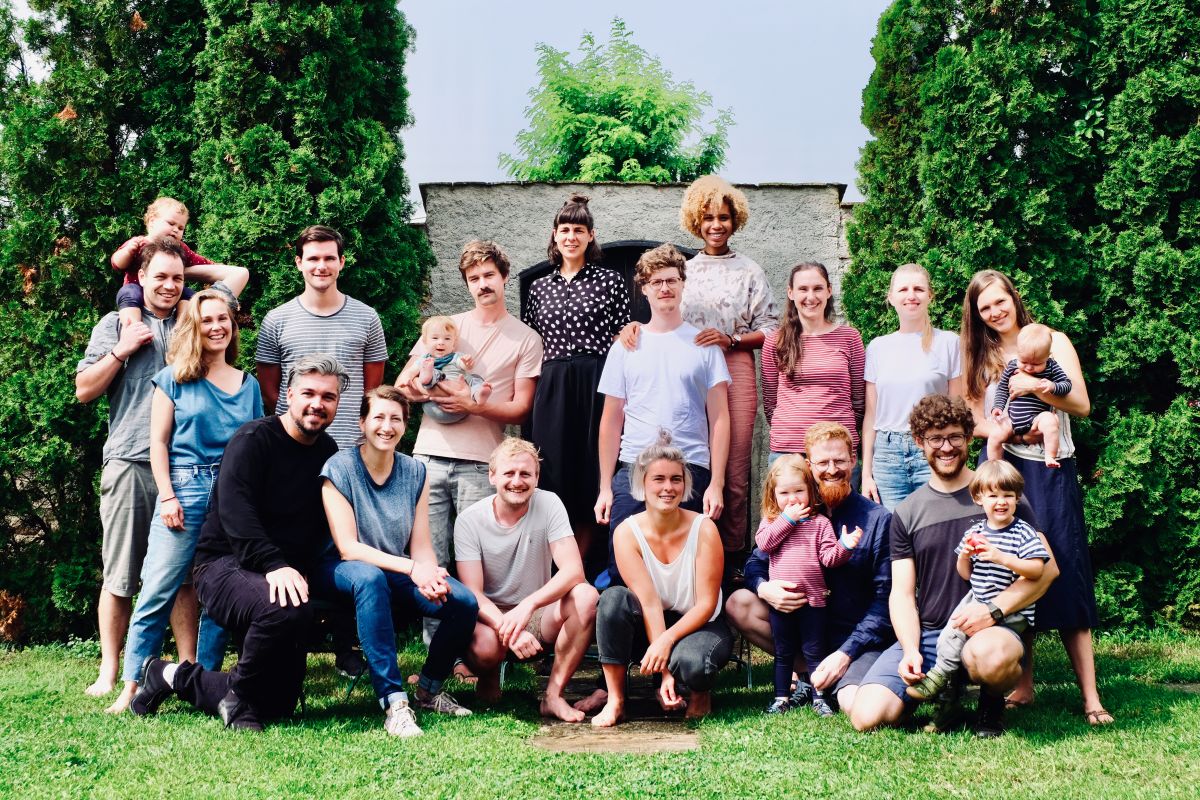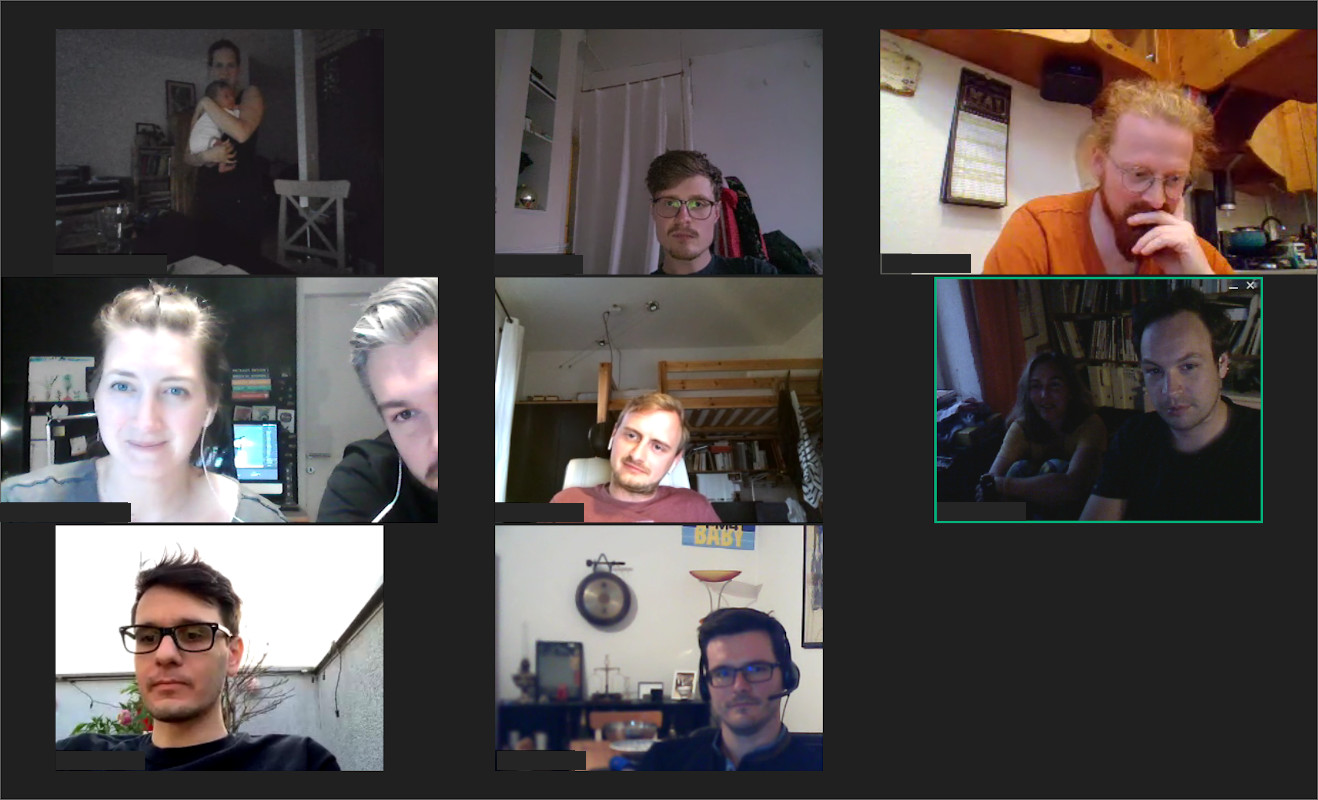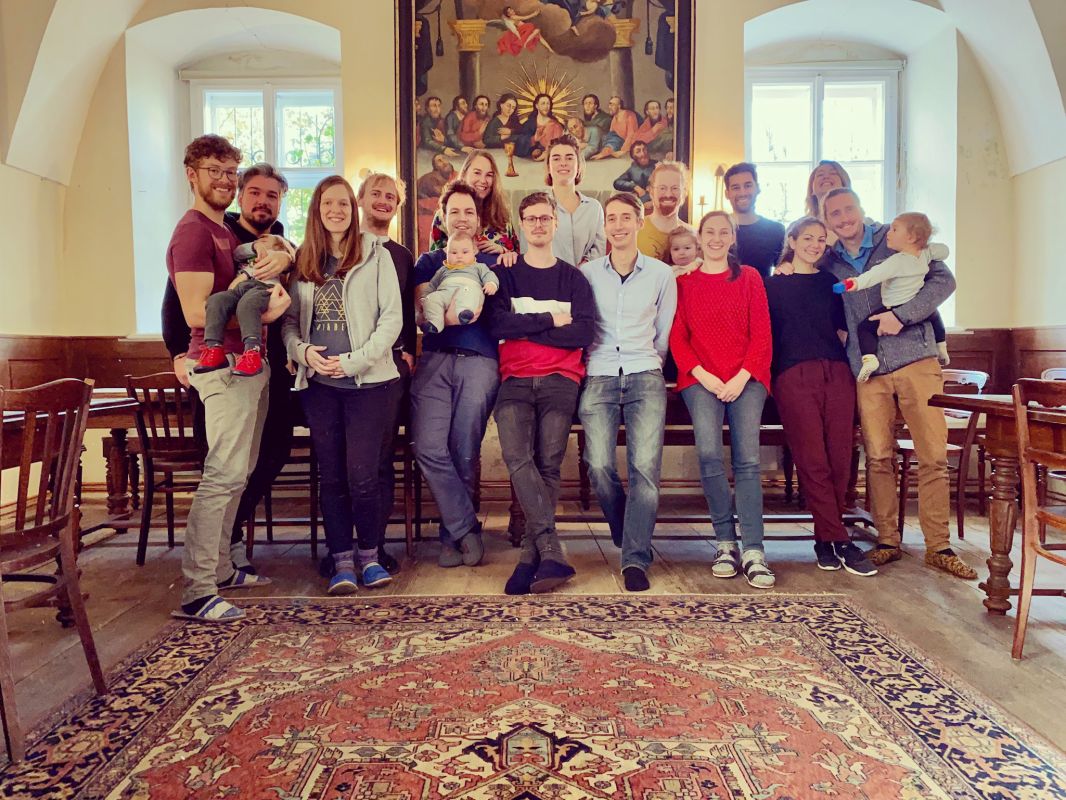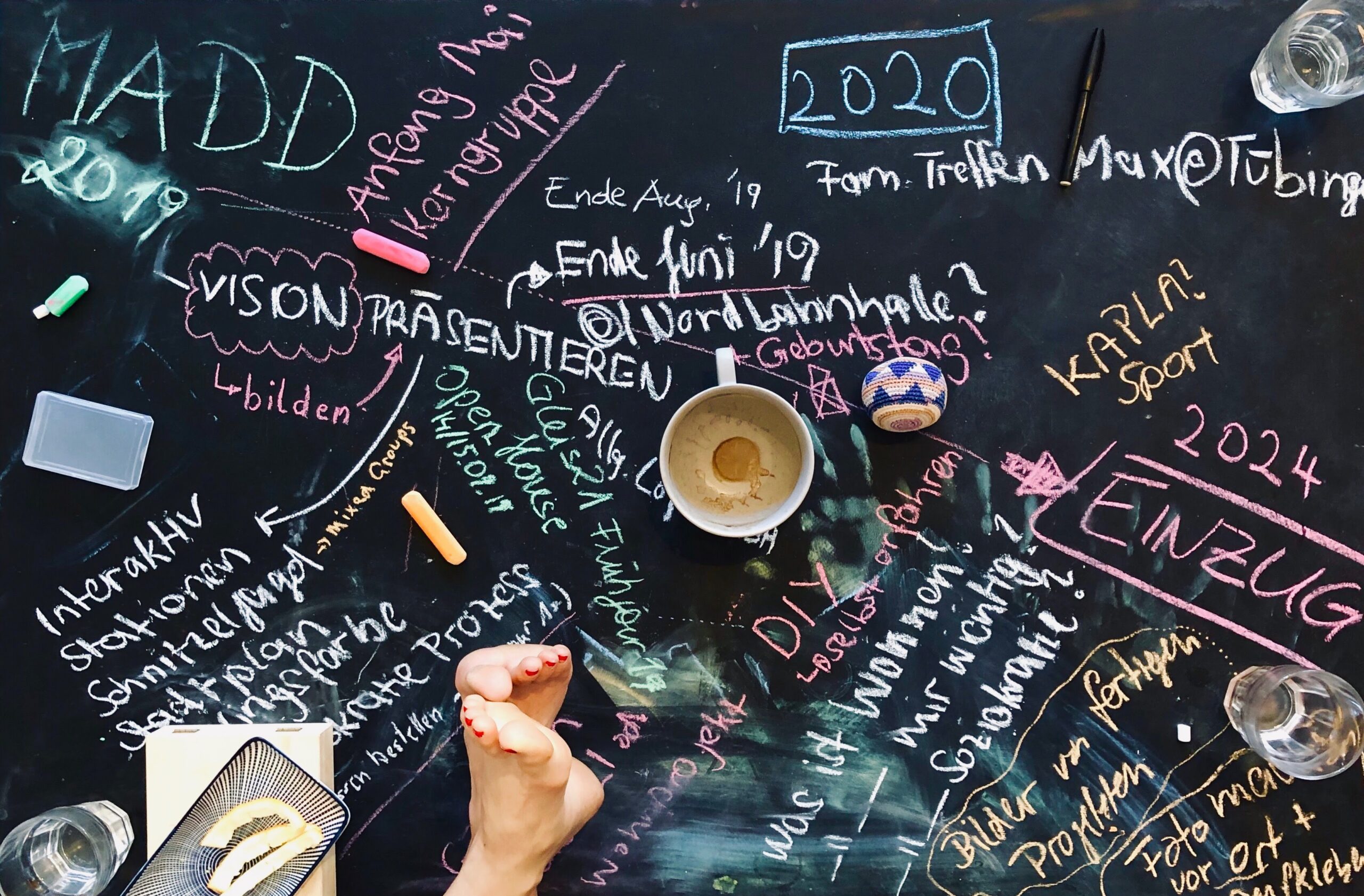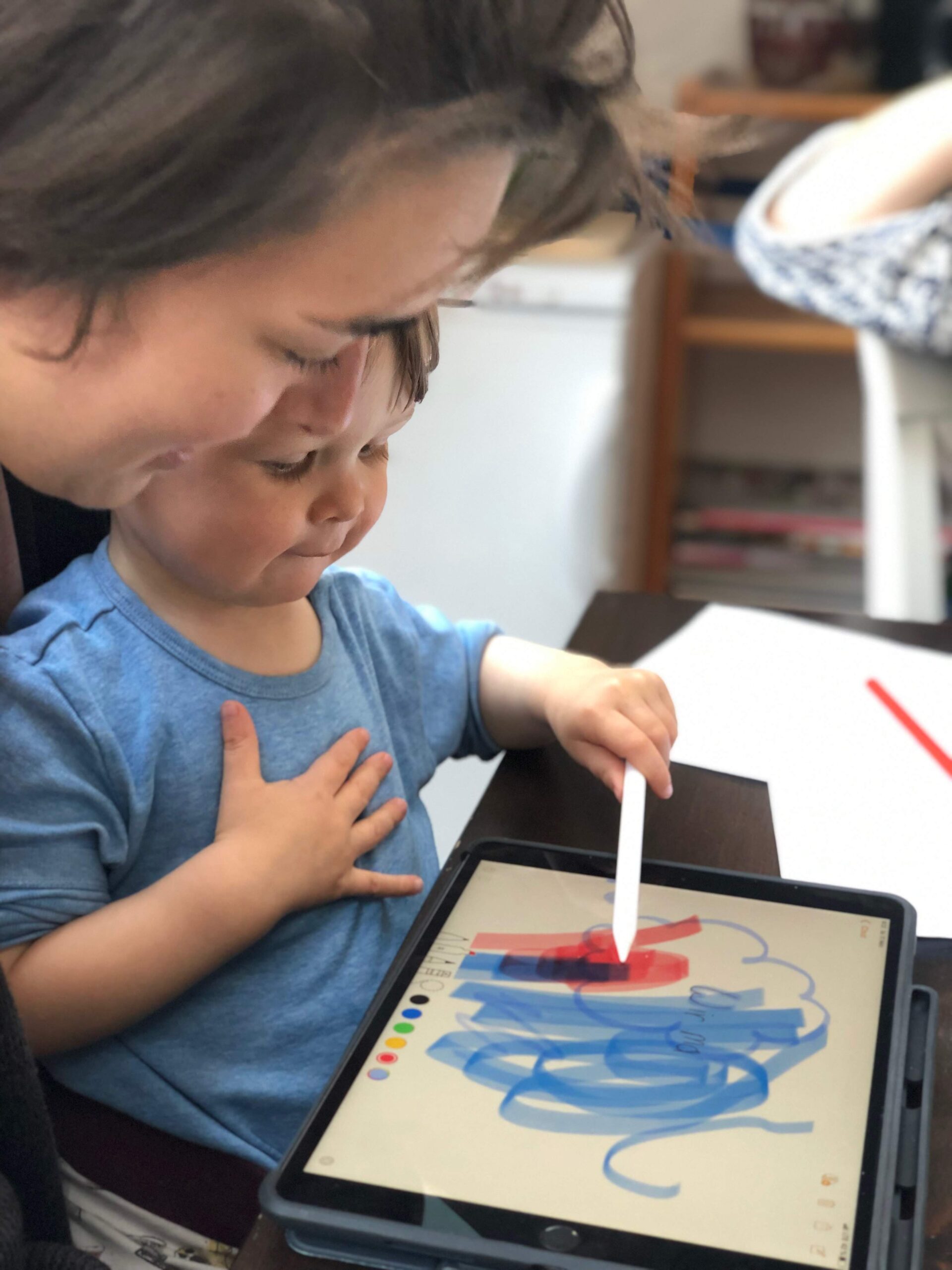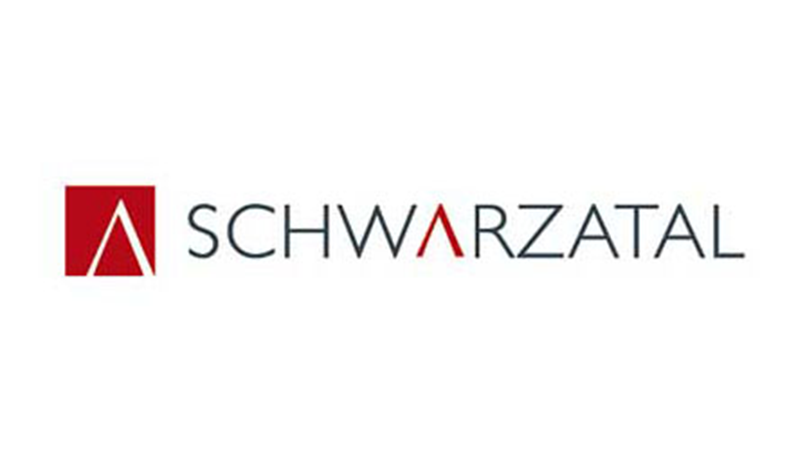A German example of an innovative energy supply concept
More energy on the roof than on the ground
In Esslingen we visited a part of town along the railroad that had declined a lot during the sixties and seventies. The decision to redevelop the area was taken long ago, when climate neutrality was not so high on the agenda yet. It took the municipality ten years to obtain all the land. In the meanwhile the thinking about area development – and as a result the objectives to reach in the project – had shifted. The initial investments that had to be made were such that the entire project was granted to one partner. They were free to determine how to meet the criteria, such as a mixed use (30% business) and climate neutrality. This CO₂ neutrality apparently was not about the construction phase, because most buildings seemed to be realized using conventional building methods.
Getting the use of energy down is taken up seriously by a wide spectrum of measures. The technological innovations of storing surplus energy into hydrogen are a central feature of the development. The concept of a solar hydrogen economy is promoted strongly by the mayor, in collaboration with a prominent scholar. The whole endeavor is presented as a flagship development for the region. You can read all details about the ins and outs of the climate-neutral urban quarter in this informative brochure.
We don’t all have such a strong lobby and development force behind us. What sparked my interest was the more down to earth, step by step changes that seem to have taken place in the collective consciousness of Esslingen, beyond the project itself. For instance, the first block that was finished still had as many parking spaces in the basement, as there were flats in the building. In this car producing region, that is the kind of norm that gets established after heated discussions in the municipal council. These ideas are shifting now. The developer proved to the municipal council what parking is needed in an urban location near public transport. From now on there will be less built parking spots in the newly constructed blocks. In addition, after the nuisance of the construction is over, there will be no more free parking throughout the town center.
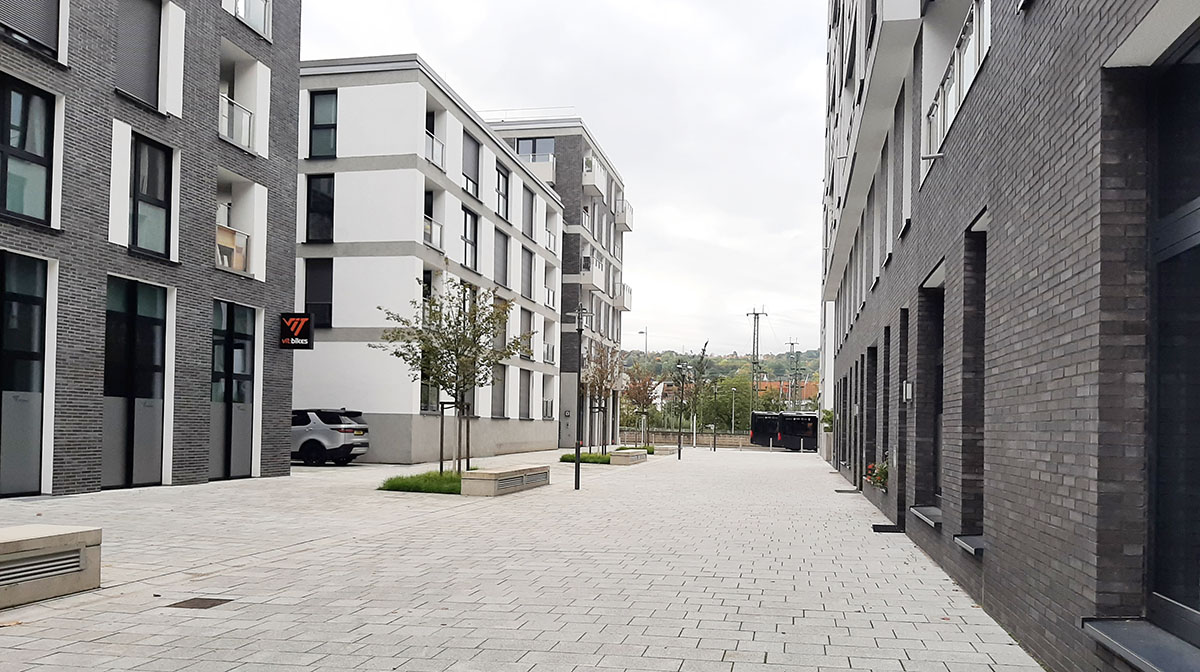

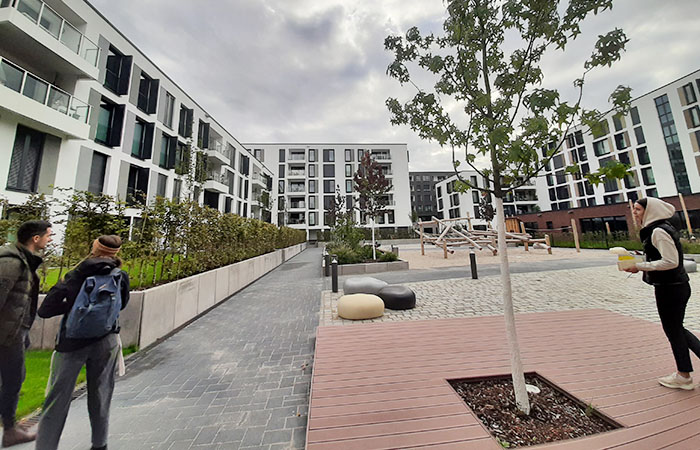
Thinking of social cohesion was not part of the planning process. Photos: Vis-à-Wien
Apparently the thinking about mobility has shifted as a result of the project, which originally did not have any climate ambitions. It is a process of learning and making steps for everybody, within their own possibilities. Ten years ago this was just a plain area development plan; the feeling of responsibility for climate objectives gradually came in. The awareness of social objectives however, was less prominent. Social housing is rather concentrated, because initially it was overlooked altogether. The housing development is financed by a bank who promises their investors a fixed percentage of returns. This business model resulted in the area being predominantly inhabited by what was described as ‘urban nomads’, professionals with little connection to the town and without children.
Excursion key data:
Date: 06.10.2022
Location: Klimaquartier – Neue Weststadt, Esslingen, Germany

